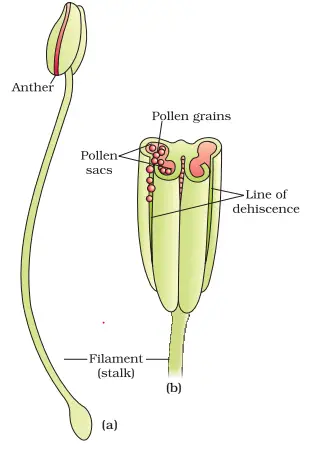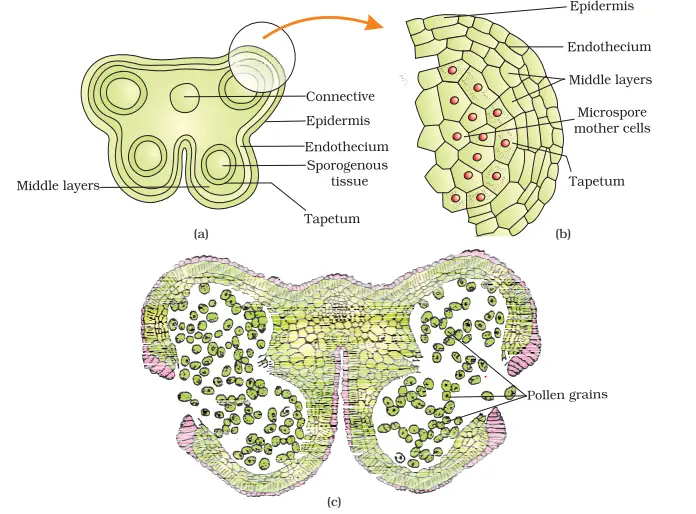Flower - The Fascinating Organs of Angiosperms
- Flowers are symbolic of beauty, love and tranquility. They form the soul of a garden and convey the message of nature to man. Flowers are objects of aesthetic, ornamental, social, religious and cultural value. Flowers are used on all festive occasions and in marriages and religious ceremonies.
- Floriculture is the branch of ornamental, horticulture concerned with growing and marketing of flowers and ornamental plants, as well as with flower arrangement.
- A flower is a modified shoot for sexual reproduction.
Parts of Flower
- A flower is generally borne on the lateral side of the peduncle at a node in the axil of the leaf-like structure called bract.
- A flower arising in the axil of a bract is called bracteate and if the bract is absent at the base of a flower the flower is called ebracteate.
- The stalk of the flower is called pedicel and with pedicel the flower is called pedicellate and if the pedicel is absent the flower is sessile.
- The pedicel has an upper swollen portion called thalamus (receptacle). It bears four types of floral leaves such as sepals, petals, stamens and carpels. In the group these whorls are called calyx, corolla, androecium and gynoecium.
- In the flower the male and female reproductive structures, the androecium (whorls of stamens) and gynoecium (whorls of carpels) differentiate and develop.
Male Reproductive Organ
The male reproductive organ is stamen/Androecium.It consists of two parts:
- Long and Slender stalk called filament
- A terminal, bilobed structure called anther.

Anther
A typical Anther is bilobed with each lobe having a theca, that is they are dithecousEach anther contains 4 microsporangium, that is, two in each lobe.
Note: Later, the two microsporangium of each lobe become fused as a pollen sac, that is, a mature anther has to pollen sac.
Structure of Microsporangium (Pollen sac):
Structure of Microsporangium (Pollen sac):
- A microsporangium is more often circular in outline and is surrounded by four wall layers:
- The outermost is the single layer of epidermis.
- The second layer is endothecium.
- Middle layers of 1-3 layers of cells.
- Tapetum, the innermost layer.
- Tapetum nourishes the developing microspores or pollen grains; while other three wall layers provide protection.
- Tapetum nourishes the developing microspores or pollen grains; while other three wall layers provide protection.

(a) Transverse section of a mature anther
(b) Enlarged view of one microsporangium showing wall layers
(c) A dehisced anther
Microsporogenesis & Formation of Pollen Grains (Male Gametophyte):
- Every cell of sporogenous tissue is a potential pollen mother cell (PMC) and can give rise to microspore tetrad.
- The process of formation of haploid microspores from a diploid pollen mother cell through meiosis is called microsporogenesis.
- Each Pollen mother cell undergoes mitosis to form a cluster of four cells called microspore tetrad.
- As the anther matures, the microspores dissociate from the tetrad and develop into pollen grains (male gametophyte).
- Pollen grain is a haploid unicellular body with a single nucleus.